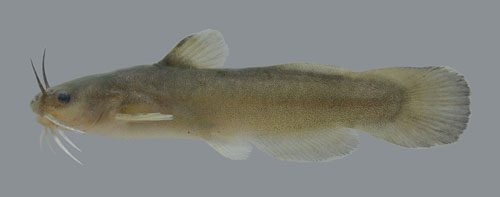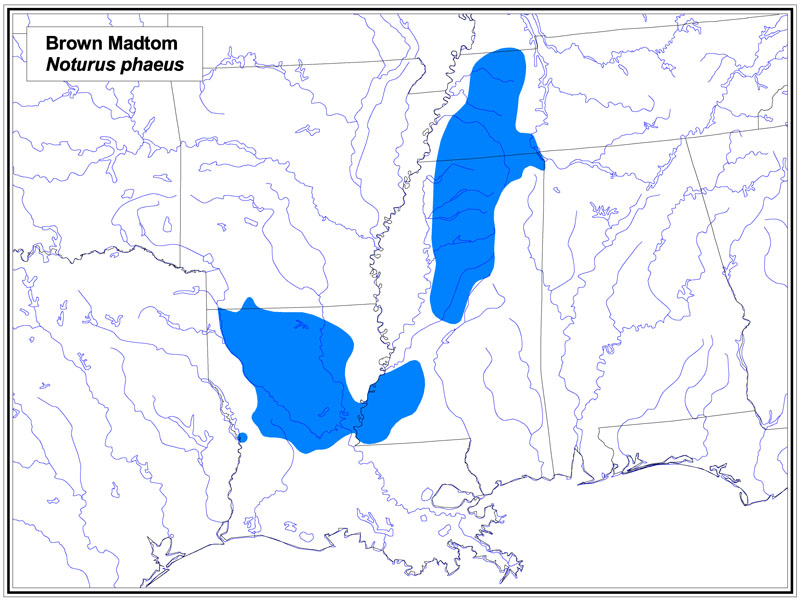
Adult from Terrapin Cr. In Mississippi River Basin,
Alderice Rd. Bridge Crossing, Graves Co., KY
Collected 6-August 2004
BROWN MADTOM
Noturus phaeus Taylor 1969
Identification: The Brown Madtom has a stout body that is light to dark brown above, lighter below, with a pattern of tiny brown dots over the body. Dots are most conspicuous on the light underside of the head and belly. The anal fin is long with 20-22 rays and reaches the caudal fin. The upper jaw projects beyond the lower jaw. The pectoral spine has about 6 large teeth on the rear edge. The caudal fin is straight or slightly rounded. To 5 3/4 in. (15 cm) total length.
Range: The Brown Madtom is found in tributaries of the Mississippi River from the Obion River, Kentucky, to southwestern Mississippi, and from southern Arkansas to central Louisiana. It also occurs in tributaries of the Tennessee River in southwestern Tennessee, and northeastern Mississippi, and on the Gulf Slope in the Sabine River and Bayou Teche drainages in Louisiana, and the upper Yockanookany River, Mississippi. The species is locally common, but rare and isolated in streams on the Gulf Slope.
Habitat: The Brown Madtom inhabits sandy and gravelly riffles and runs near debris, rocks, and undercut banks of creeks and small rivers.
Similar species: The Black Madtom, Noturus funebris, is black or bluish above; has no or only a few small teeth on the rear edge of the pectoral spine and a longer anal fin with 21-27 rays. The Freckled Madtom, Noturus nocturnus, lacks dark dots or specks on the underside of the head and belly, and has 16-18 anal rays and 2-3 small teeth on the rear edge of the pectoral spine. The Speckled Madtom, Noturus leptacanthus, is more slender, has conspicuous black specks – some much larger than others – on the back and sides, 14-19 anal rays, and no teeth on the pectoral spine.
